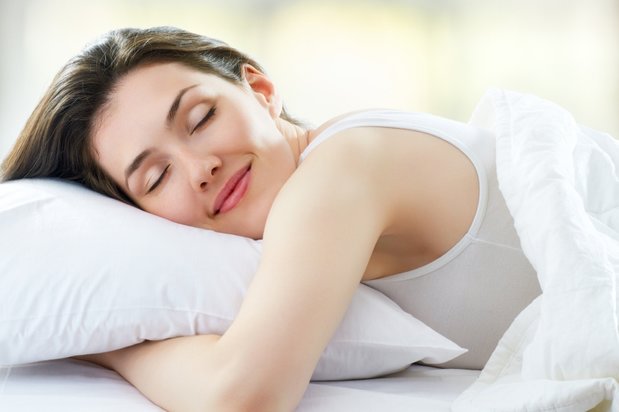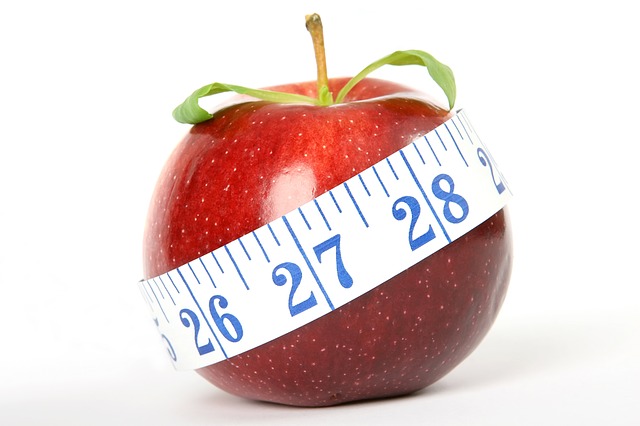The term Sleep is a very common one, which is used by everyone that has life in them. The term is a very broad one, and one who does not carry out this activity is either said to have a health challenge or is literally dead. Sleep can be defined in different ways, but these are the most popular definitions of all;
- Sleep is a condition of body and mind which typically recurs for several hours most especially every night, in which the nervous system is inactive, the eyes closed, the postural muscles relaxed, and consciousness practically suspended.
- Sleep can also be defined as the state of muscle relaxation and reduced perception of environmental stimuli.
- Sleep is the natural state of rest in which your eyes are closed, your body is inactive, and your mind does not think.
- Sleep is a naturally recurring state of mind and body, which is characterized by altered consciousness, reduced interactions with surroundings. It is distinguished from wakefulness by a decreased ability to react to stimuli but is more easily reversed than the state of being in a coma
Sleep occurs in repeating periods, in which the body alternates between two distinct modes: REM sleep and non-REM sleep. Although REM stands for “rapid eye movement”, this mode of sleep has many other aspects, including virtual paralysis of the body. A well-known feature of sleep is the dream, an experience typically recounted in narrative form, which resembles waking life while in progress, but which usually can later be distinguished as fantasy.
While sleeping, most of the body’s systems are in an anabolic state, helping to restore the immune, nervous, skeletal, and muscular systems; which are vital processes that maintain mood, memory, and cognitive function, and play a large role in the function of the endocrine and immune systems. The internal circadian clock promotes sleep daily at night. Humans may suffer from various sleep disorders, including dyssomnias such as insomnia, hypersomnia, narcolepsy, and sleep apnea; parasomnias such as sleepwalking and REM behavior disorder; bruxism; and circadian rhythm sleep disorders.
Physiology About Sleep
The most pronounced physiological changes in sleep occur in the brain. The brain uses significantly less energy during sleep than it does when awake, especially during non-REM sleep. In areas with reduced activity, the brain restores its supply of adenosine triphosphate (ATP), the molecule used for short-term storage and transport of energy. In quiet waking, the brain is responsible for 20% of the body’s energy use, thus this reduction has an independently noticeable effect on overall energy consumption.
Sleep increases the sensory threshold. In other words, sleeping persons perceive fewer stimuli. However, they can generally still respond to loud noises and other salient sensory events. During slow-wave sleep, humans secrete bursts of growth hormone. All sleep, even during the day, is associated with secretion of prolactin.
Key physiological methods for monitoring and measuring changes during sleep include electroencephalography (EEG) of brain waves, electrooculography (EOG) of eye movements, and electromyography (EMG) of skeletal muscle activity. Simultaneous collection of these measurements is called polysomnography and can be performed in a specialized sleep laboratory. Sleep researchers also use simplified electrocardiography (EKG) for cardiac activity and actigraphy for motor movements.
Non-REM and REM Sleep
Sleep is divided into two broad types: non-rapid eye movement (non-REM or NREM) sleep and rapid eye movement (REM) sleep. Non-REM and REM sleep are so different that physiologists identify them as distinct behavioral states. Non-REM sleep occurs first and after a transitional period called slow-wave sleep or deep sleep. During this phase, body temperature and heart rate fall, and the brain use less energy. REM sleep, also known as paradoxical sleep, represents a smaller portion of total sleep time. It is the main occasion for dreams (or nightmares) and is associated with desynchronized and fast brain waves, eye movements, loss of muscle tone, and suspension of homeostasis.
The sleep cycle of alternate NREM and REM sleep takes an average of 90 minutes, occurring 4–6 times in a good night’s sleep. The American Academy of Sleep Medicine (AASM) divides NREM into three stages: N1, N2, and N3, the last of which is also called delta sleep or slow-wave sleep. The whole period normally proceeds in the order: N1 → N2 → N3 → N2 → REM. REM sleep occurs as a person returns to stage 2 or 1 from a deep sleep. There is a greater amount of deep sleep (stage N3) earlier in the night, while the proportion of REM sleep increases in the two cycles just before natural awakening.
Awakening
Awakening can mean the end of sleep, or simply a moment to survey the environment and readjust body position before falling back asleep. Sleepers typically awaken soon after the end of a REM phase or sometimes in the middle of REM. Internal circadian indicators, along with the successful reduction of homeostatic sleep need, typically bring about awakening and the end of the sleep cycle. Awakening involves heightened electrical activation in the brain, beginning with the thalamus and spreading throughout the cortex.
During a night’s sleep, a small portion is usually spent in a waking state. As measured by electroencephalography, young females are awake for 0–1% of the larger sleeping period; young males are awake for 0–2%. In adults, wakefulness increases, especially in later cycles. One study found 3% awake time in the first ninety-minute sleep cycle, 8% in the second, 10% in the third, 12% in the fourth, and 13–14% in the fifth. Most of this awake time occurred shortly after REM sleep.
Today, due to the hustle of a large number of people all over the world, many humans wake up with an alarm clock; however, some people can reliably wake themselves up at a specific time with no need for an alarm. Many sleep quite differently on workdays versus days off, a pattern which can lead to chronic circadian desynchronization. Many people regularly look at television and other screens before going to bed, a factor which may worsen disruption of the circadian cycle. Scientific studies on sleep have shown that sleep stage at awakening is an important factor in amplifying sleep inertia.
Timing
Sleep timing is controlled by the circadian clock (Process C), sleep-wake homeostasis (Process S), and to some extent by individual will.
The human “biological clock”
Sleep timing depends greatly on hormonal signals from the circadian clock, or Process C, a complex neurochemical system which uses signals from an organism’s environment to recreate an internal day-night rhythm.
An organism whose circadian clock exhibits a regular rhythm corresponding to outside signals is said to be entrained; an entrained rhythm persists even if the outside signals suddenly disappear. If an entrained human is isolated in a bunker with constant light or darkness, he or she will continue to experience rhythmic increases and decreases of body temperature and melatonin, on a period which slightly exceeds 24 hours. Scientists refer to such conditions as free-running of the circadian rhythm. Under natural conditions, light signals regularly adjust this period downward, so that it corresponds better with the exact 24 hours of an Earth day.
The clock exerts constantly influence on the body, affecting the sinusoidal oscillation of body temperature between roughly 36.2 °C and 37.2 °C. The suprachiasmatic nucleus itself shows conspicuous oscillation activity, which intensifies during subjective day (i.e., the part of the rhythm corresponding with daytime, whether accurately or not) and drops to almost nothing during the subjective night. The circadian pacemaker in the suprachiasmatic nucleus has a direct neural connection to the pineal gland, which releases the hormone melatonin at night. Cortisol levels typically rise throughout the night, peak in the awakening hours, and diminish during the day. Circadian prolactin secretion begins in the late afternoon, especially in women, and is subsequently augmented by sleep-induced secretion, to peak in the middle of the night.
The circadian rhythm influences the ideal timing of a restorative sleep episode. Sleepiness increases during the night. REM sleep occurs more during body temperature minimum within the circadian cycle. whereas, modern humans often find themselves desynchronized from their internal circadian clock, due to the requirements of work (especially night shifts), long-distance travel, and the influence of universal indoor lighting. Even if they have a sleep debt, or feel sleepy, people can have difficulty staying asleep at the peak of their circadian cycle. Conversely, they can have difficulty waking up in the trough of the cycle. A healthy young adult entrained to the sun will (during most of the year) fall asleep a few hours after sunset, experience body temperature minimum at 6 AM, and wake up a few hours after sunrise.
Deprivation of Sleep

Sleep deprivation tends to cause slower brain waves in the frontal cortex, shortened attention span, higher anxiety, impaired memory, and a grouchy mood. Conversely, a well-rested organism tends to have improved memory and mood. Neurophysiological and functional imaging studies have demonstrated that frontal regions of the brain are particularly responsive to homeostatic sleep pressure.
There is disagreement on how much sleep debt it is possible to accumulate, and whether sleep debt is accumulated against an individual’s average sleep or some other benchmark. It is also unclear whether the prevalence of sleep debt among adults has changed appreciably in the industrialized world in recent decades. Sleep debt does show some evidence of being cumulative. Subjectively, however, humans seem to reach maximum sleepiness after 30 hours of waking. It is likely that in Western societies, children are sleeping less than they previously have.
One neurochemical indicator of sleep debt is adenosine, a neurotransmitter that inhibits many of the bodily processes associated with wakefulness. Adenosine levels increase in the cortex and basal forebrain during prolonged wakefulness, and decrease during the sleep-recovery period, potentially acting as a homeostatic regulator of sleep. Coffee and caffeine temporarily block the effect of adenosine, prolong sleep latency, and reduce total sleep time and quality.
Social Timing
Naturally, humans are also influenced by aspects of social time, such as the hours when other people are awake, cockcrow, the hours when work is required, the time on the clock, etc. Time zones, standard times used to unify the timing for people in the same area, correspond only approximately to the natural rising and setting of the sun. The approximate nature of the timezone can be shown with China, a country which used to span five time zones and now uses only one (UTC +8).
Naps
The siesta habit has recently been associated with a 37% lower coronary mortality, possibly due to reduced cardiovascular stress mediated by daytime sleep. Short naps at mid-day and mild evening exercise were found to be effective for improved sleep, cognitive tasks, and mental health in elderly people.
Many people experience a temporary drop in alertness in the early afternoon, commonly known as the “post-lunch dip.” While a large meal can make a person feel sleepy, the post-lunch dip is mostly an effect of the circadian clock. People naturally feel most sleepy at two times of the day about 12 hours apart—for example, at 2:00 a.m. and 2:00 p.m. At those two times, the body clock “kicks in.” At about 2 p.m. (14:00), it overrides the homeostatic buildup of sleep debt, allowing several more hours of wakefulness. At about 2 a.m. (02:00), with the daily sleep debt paid off, it “kicks in” again to ensure a few more hours of sleep.
Genetics
A discovery has been made that a considerable amount of sleep-related behavior, such as when and how long a person needs to sleep, is regulated by genetics. Researchers have discovered some evidence that seems to support this assumption. Monozygotic (identical) but not dizygotic (fraternal) twins tend to have similar sleep habits. Neurotransmitters, molecules whose production can be traced to specific genes, are one genetic influence on sleep which can be analyzed. And the circadian clock has its own set of genes. Genes which may influence sleep include ABCC9,[39] DEC2, and variants near PAX 8 and VRK2.
Quality
The quality of sleep may be evaluated from an objective and a subjective point of view. Objective sleep quality refers to how difficult it is for a person to fall asleep and remain in a sleeping state, and how many times they wake up during a single night. Poor sleep quality disrupts the cycle of transition between the different stages of sleep. Subjective sleep quality, in turn, refers to a sense of being rested and regenerated after waking from sleep. A study by A. Harvey et al. (2002) found that insomniacs were more demanding in their evaluations of sleep quality than individuals who had no sleep problems.
Along with corresponding messages from the circadian clock, which tells the body it needs to sleep. A person who regularly awakens at an early hour will generally not be able to sleep much later than his or her normal waking time, even if moderately sleep-deprived. The timing is correct when the following two circadian markers occur after the middle of the sleep episode and before awakening:
Ideal Sleeping Duration
Human sleep needs vary by age and amongst individuals, and sleep is considered to be adequate when there is no daytime sleepiness or dysfunction. Researchers have found that sleeping 6–7 hours each night correlates with longevity and cardiac health in humans, though many underlying factors may be involved in the causality behind this relationship.
Sleep difficulties are furthermore associated with psychiatric disorders such as depression, alcoholism, and bipolar disorder. Up to 90% of adults with depression are found to have sleep difficulties. Dysregulation detected by EEG includes disturbances in sleep continuity, decreased delta sleep and altered REM patterns with regard to latency, distribution across the night and density of eye movements.
Children
By the time infants reach the age of two, their brain size has reached 90 percent of an adult-sized brain; a majority of this brain growth has occurred during the period of life with the highest rate of sleep. The hours that children spend asleep influence their ability to perform on cognitive tasks. Children who sleep through the night and have few night waking episodes have higher cognitive attainments and easier temperaments than other children.
Sleep also influences language development. To test this, researchers taught infants a faux language and observed their recollection of the rules for that language. Infants who slept within four hours of learning the language could remember the language rules better, while infants who stayed awake longer did not recall those rules as well. There is also a relationship between infants’ vocabulary and sleeping: infants who sleep longer at night at 12 months have better vocabularies at 26 months. Children need many hours of sleep per day in order to develop and function properly: up to 18 hours for newborn babies, with a declining rate as a child age.
Early 2015, after a two-year study, the National Sleep Foundation in the US announced newly revised recommendations as shown in the table below.
Age and Condition Sleep Needs
Newborns (0–3 months) 14 to 17 hours
Infants (4–11 months) 12 to 15 hours
Toddlers (1–2 years) 11 to 14 hours
Preschoolers (3–4 years) 10 to 13 hours
School-age children (5–12 years) 9 to 11 hours
Teenagers (13–17 years) 8 to 10 hours
Adults (18–64 years) 7 to 9 hours
Older Adults (65 years and over) 7 to 8 hours
Functions of Good Sleep

Curb inflammation
Inflammation is linked to heart disease, stroke, diabetes, arthritis, and premature aging. Research indicates that people who get less sleep six or fewer hours a night have higher blood levels of inflammatory proteins than those who get more.
Live longer?
Too much or too little sleep is associated with a shorter lifespan. In a 2010 study of women ages 50 to 79, more deaths occurred in women who got less than five hours or more than six and a half hours of sleep per night.
Quality of Life
The human organism physically restores itself during sleep, healing itself and removing metabolic wastes which build up during periods of activity. This restoration takes place mostly during slow-wave sleep, during which body temperature, heart rate, and brain oxygen consumption decrease. The brain, especially, requires sleep for restoration, whereas in the rest of the body these processes can take place during quiescent waking. In both cases, the reduced rate of metabolism enables countervailing restorative processes.
While awake, metabolism generates reactive oxygen species, which are damaging to cells. In sleep, metabolic rates decrease and reactive oxygen species generation is reduced allowing restorative processes to take over. The sleeping brain has been shown to remove metabolic waste products at a faster rate than during an awake state. It is further theorized that sleep helps facilitate the synthesis of molecules that help repair and protect the brain from these harmful elements generated during waking. Anabolic hormones such as growth hormones are secreted preferentially during sleep. Sleep has also been theorized to effectively combat the accumulation of free radicals in the brain, by increasing the efficiency of endogenous antioxidant mechanisms.
Improves healthy weight
If you are thinking about going on a diet, you might want to plan an earlier bedtime too.
Researchers at the University of Chicago found that dieters who were well rested lost more fat 56% of their weight loss than those who were sleep deprived, who lost more muscle mass. (They shed similar amounts of total weight regardless of sleep.)
Wound healing
Sleep increases white blood cell counts, thereby enhancing the healing of wounds. A 2014 study found that depriving mice of sleep increased cancer growth and dampens the immune system’s ability to control cancers.
Memory Processing
Sleep enhances memory, with procedural memory benefiting from late, REM-rich sleep, and explicit memory benefiting from early, slow wave-rich sleep.
Lower stress
Sleep can definitely reduce levels of stress, and with that people can have better control of their blood pressure, Dr. Jean says. “It’s also believed that sleep effects cholesterol levels, which plays a significant role in heart disease.”
Dreaming
During sleep, especially REM sleep, people tend to have dreams: elusive first-person experiences, which, despite their frequently strange qualities, seem realistic while in progress. Dreams can incorporate elements within a person’s mind that would not normally go together. They can include apparent sensations of all types, especially vision and movement.
John Allan Hobson and Robert McCarley propose that dreams are caused by the random firing of neurons in the cerebral cortex during the REM period. Neatly, this theory helps explain the irrationality of the mind during REM periods, as, according to this theory, the forebrain then creates a story in an attempt to reconcile and make sense of the nonsensical sensory information presented to it. This would explain the odd nature of many dreams.
Spikes Creativity
Get a good night’s sleep before getting out the easel and paintbrushes or the pen and paper. In addition to consolidating memories, or making them stronger, your brain appears to reorganize and restructure them, which may result in more creativity as well.
Researchers at Harvard University and Boston College found that people seem to strengthen the emotional components of a memory during sleep, which may help spur the creative process.
Makes You a winner
If you are an athlete, there may be one simple way to improve your performance: sleep.
A Stanford University study found that college football players who tried to sleep at least 10 hours a night for seven to eight weeks improved their average sprint time and had less daytime fatigue and more stamina.
Improves your grades
Children between the ages of 10 and 16 who have sleep disorder breathing, which includes snoring, sleep apnea, and other types of interrupted breathing during sleep, are more likely to have problems with attention and learning, according to a 2010 study in the journal Sleep.
Sharpen attention
A lack of sleep can result in ADHD-like symptoms in kids, Dr. Rapoport says.
“Kids don’t react the same way to sleep deprivation as adults do,” he adds. “Whereas adults get sleepy, kids tend to get hyperactive.”
Sleep Disorders

Insomnia
Insomnia is a general term for difficulty in falling asleep or staying asleep. Insomnia is the most common sleep problem, with many adults reporting occasional insomnia, and 10–15% reporting a chronic condition. Insomnia has many different causes, including psychological stress, a poor sleep environment, an inconsistent sleep schedule, or excessive mental or physical stimulation in the hours before bedtime. Insomnia is often treated through behavioral changes like keeping a regular sleep schedule, avoiding stimulating or stressful activities before bedtime, and cutting down on stimulants such as caffeine. The sleep environment may be improved by installing heavy drapes to shut out all sunlight, and keeping computers, televisions and work materials out of the sleeping area.
Obstructive Sleep Apnea
Obstructive sleep apnea is a condition in which major pauses in breathing occur during sleep, disrupting the normal progression of sleep and often causing other more severe health problems. Apneas occur when the muscles around the patient’s airway relax during sleep, causing the airway to collapse and block the intake of oxygen. Obstructive sleep apnea is more common than central sleep apnea. As oxygen levels in the blood drop, the patient then comes out of deep sleep in order to resume breathing. When several of these episodes occur per hour, sleep apnea rises to a level of seriousness that may require treatment.
Diagnosing sleep apnea usually requires a professional sleep study performed in a sleep clinic, because the episodes of wakefulness caused by the disorder are extremely brief and patients usually do not remember experiencing them. Instead, many patients simply feel tired after getting several hours of sleep and have no idea why. Major risk factors for sleep apnea include chronic fatigue, old age, obesity, and snoring.
Other Disorders
Sleep disorders include;
- Narcolepsy
- Periodic Limb Movement Disorder (PLMD)
- Restless Leg Syndrome (RLS)
- Upper Airway Resistance Syndrome (UARS)
- Fatal Familial Insomnia, or (FFI), an extremely rare genetic disease with no known treatment or cure, is characterized by increasing insomnia as one of its symptoms; one who suffers this disease stop sleeping entirely, before dying of the disease.
- Somnambulism; known as (sleepwalking), also a common sleeping disorder, especially among children. In somnambulism the individual gets up from his/her sleep and wanders around while still sleeping.
Diet
Dietary and nutritional choices may affect sleep duration and quality. A 2016 review indicated that a high carbohydrate diet promoted shorter onset to sleep and longer duration sleep than a high-fat diet. An investigation carried out states that mixed micronutrients and macronutrients are needed to promote quality sleep. A varied diet containing fresh fruits and vegetables, low saturated fat, and whole grains may be optimal for individuals seeking to improve sleep quality.
Sleeping Tips
- Stick to a sleep roaster of when you want to sleep and be awake
- Practice a relaxing bedtime routine
- If you have trouble sleeping, avoid naps, especially in the afternoon.
- Exercise daily
- Design your name to be conducive; Your bedroom should be cool – between 60 and 67 degrees. Your bedroom should also be free from any noise that can disturb your sleep.
- Sleep on a comfortable mattress and pillows
Sleeping Positions and their Results

Sleeping on Stomach
Approximately 7% of people sleep on their stomach. It may help ease snoring, but sleeping in this position may aggravate other medical conditions. Your neck and spine are not in a neutral position when you sleep on your stomach. This may cause neck and back pain. Stomach sleeping can put pressure on nerves and cause numbness, tingling, and nerve pain. It’s best to choose another sleep position if you are a stomach sleeper. If you can’t break the habit, prop your forehead up on a pillow so your head and spine remain in a neutral position and you have room to breathe.
Starfish Position
People who sleep in a starfish position sleep on their backs with their arms up over their head. Approximately 5% of people sleep this way. Research shows people who sleep in this position do not like being the center of attention. They are also likely to be good listeners and helpful. As all those who sleep on their backs, people who sleep in the starfish position may be prone to snoring and sleep problems.
The Freefall Position
About 7% of people sleep on their stomachs with their heads turned to the side. People who sleep this way have their arms wrapped around a pillow or tucked under a pillow. One sleep researcher discovered people who sleep this way may be more likely to be outspoken, outgoing, and sociable. They may also be more likely to not take criticism well.
Soldier Position
In this position, the sleepers lie on their backs and their arms are down and close to the body. Approximately 8% of people sleep like this. Research has shown that people who sleep in this position may have quiet and reserved personalities. They may also have high standards both for themselves and others. This is not one of the best sleep positions for snoring and may prevent you from getting a restful night’s sleep.
Side Sleeping
The most popular sleep position by far is side sleeping. Approximately 41% of people sleep this way, curled up on their sides with their knees bent. This is also called the fetal position. More women than men sleep in this position. This position is good for pregnant women because it facilitates circulation to both mom and the fetus. The position may be good for those who snore. If you have arthritis, sleeping in this position may make you sore. Curling up may also prevent you from breathing deeply because your diaphragm is restricted.
Fetal Position
Side sleepers who sleep with their legs bent and curled toward their torsos are sleeping in the so-called fetal position. Women are twice as likely to sleep in the fetal position as men. Researchers have found that people who sleep in the fetal position have warm and friendly personalities. They may be more likely to be sensitive on the inside and have a tough, protective exterior. If sleeping this way hurts your hips, placing a pillow between your knees may help relieve the pressure.
Sleeping on Your Back
Some people who sleep on their backs may experience low back pain from this sleep position. It can also make existing back pain worse. So this is not the best sleep position for lower back pain. If you suffer from snoring or sleep apnea, sleeping on your back may aggravate these conditions.
Spooning Position
Spooning is a side sleeping position for couples where the person in the back holds the one in the front close to their body. Couples may wake up more frequently sleeping this way, but cuddling stimulates the release of oxytocin. This is a hormone that promotes bonding, decreases stress, and may help you get to sleep more quickly. Cuddling for as little as 10 minutes is enough to trigger the release of oxytocin.
Log of Wood
People who sleep in the log position sleep on their sides with their arms down next to their bodies. This sleep position may be good for you if you snore. If you have arthritis, you may wake up in pain. Approximately 15% of people sleep like a log. Researchers have found that people who sleep this way easygoing and social. They are more likely to be trusting, perhaps even gullible.






